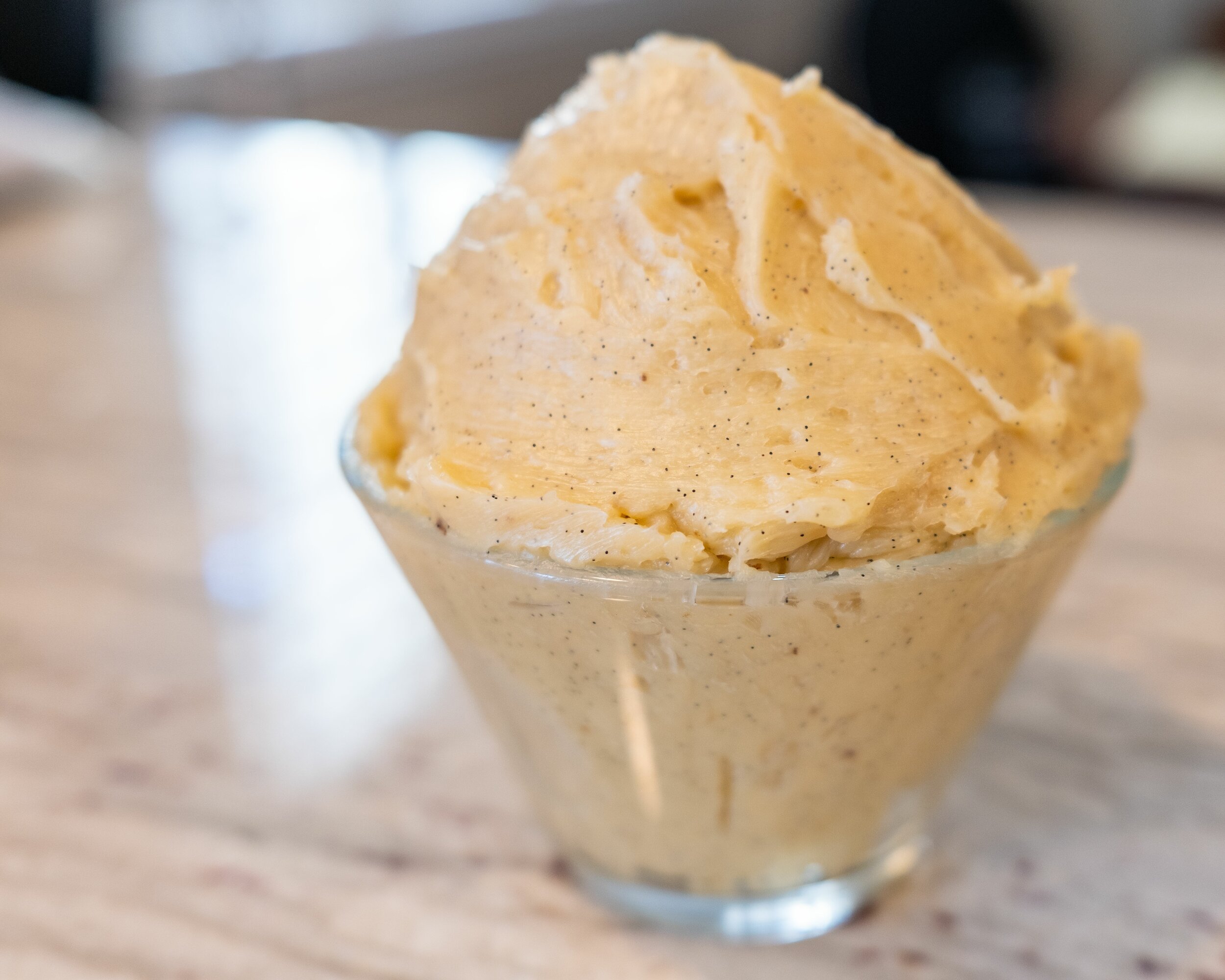When you talk sauce, I'm a true Dane. I love sauce, and lots of it. But if you go the classic French sauce way, you have to use large amount of butter or other fats. I learned to perfect the traditional sauce bearnaise made in a blender or made sous vide. And even though they taste delicious, and a little goes a long way, it would be nice to have a sauce bearnaise where you can indulge in the tasty sauce, without eating a whole stick of butter with your steak. Vegetable bearnaise is the answer. With only 6 tablespoons of butter in a big bowl of sauce, that serves 6-8 sauce lovers, this is definitely on the healthier side, compared with the original bearnaise.
You can add pretty much any vegetables you like, just bear in mind that more carrots will give you a sweeter bearnaise. and generally the color of the vegetables will influence the color of the sauce.
If you like a spicier bearnaise add a dash of cayenne or chilies to the mix. And for a garlic bearnaise add 1 cloves of garlic the last 5 minutes of the simmering.
Serves 6-8.
Ingredients:
Reduction:
1 bunch fresh tarragon, save some leaves for finishing the sauce
4 small or 2 medium shallots, minced
½ cup (1 dl) white wine vinegar
½ cup (1 dl) dry white wine
6 whole black peppers (for the reduction)
Vegetable base:
1 medium carrot, peeled and roughly chopped
½ medium onion, peeled and roughly chopped
2-3 celery stalks, peeled and roughly chopped
½ medium cauliflower, in florets
½ cube chicken bouillon
½ teaspoon salt
1 cup (240 ml) water
2 sprigs of fresh tarragon
Finishing touches:
6 tablespoons butter, salted and cold
2-4 tablespoons reduction, to taste
3 sprigs fresh tarragon, leaves only, coarsely chopped
salt, to taste
Directions:
Reduction:
In a small saucepan, combine sprigs of the tarragon, shallots, vinegar pepper and wine over medium-high heat. Bring to a simmer and cook until reduced by half. Remove from heat, strain the liquid and set it aside to cool. You can make larger amounts and freeze it in smaller portions in an ice cube tray.
Vegetable base:
Place the ingredients for the vegetable base in a saucepan, and bring it to a boil, turn down the heat and let the vegetable simmer covered for about 20-30 minutes until all the vegetables are tender.
Put vegetable base, butter and reduction into a blender*. Season the sauce with salt and more reduction. Mix in the tarragon just before serving.
Enjoy!
*Be careful when blending hot liquids, it can make the lid pop off, and you may risk getting serious burns on you skin. You can remove the small cap on you blender lid and cover the lid with a clean kitchen towel. You need to hold on to the lid and towel. This will let the steam from the hot soup escape and avoid the lid from popping off. You can also get blenders like the Vitamix, where you can blend hot liquids, without any hassle.





